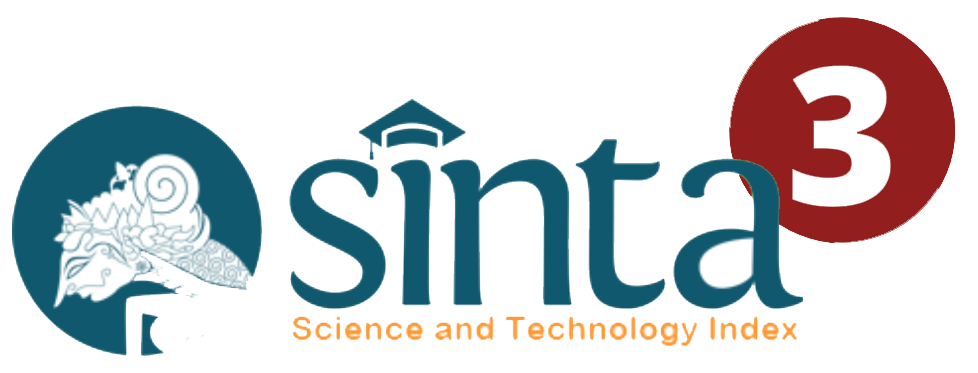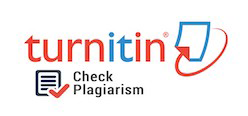USE OF HYPERTEKS TO IMPROVE THE CAPNITIVE ASPECT ABILITY OF SCHOOL BASIC STUDENTS ON A SIMPLE AIRPORT SUPPORT
DOI:
https://doi.org/10.22460/pej.v1i1.420Abstract
The main issues of this research are how to improve the cognitive aspects of elementary school students on the subject of simple plane through the use of hypertext. The objectives of the research are as follows: (1). Improving cognitive aspects of elementary students through Hypertext; (2). Providing Hypertext learning through a fun and inspiring computer device can inspire elementary students. The methods / approaches used in achieving the following objectives: (a). Collect students and elementary teachers involved in research; (B). Provide an overview of the research activities to be undertaken; (C). Reflecting, discussing the use of hypertext; (D). Collaborate with elementary teachers in the determination of experimental class and control class; (E). Implementation of Hypertext Study; (F). Evaluation of Hypertext Learning. The results showed that there was an increase of cognitive aspect ability of elementary school students through Hiperteks by 33%; (2). Elementary students are enthusiastic with Hypertext lessons given by teachers; (3). Collaborative occurrence between one student and another student at the time of Hypertext learning is done.Keywords: Learning, Hypertext, CognitiveReferences
Arıcı, N. &Dalkılıç, E. (2006). The contribution of animations to computer assisted education: an application sample. Kastamonu Education Journal, 14 (2), 421-430.
Aslan, Z. & et al. (2011).Measurement of night sky brightness in Turkey. Proceedings Book of 8th National Lighting Congress, 14-15 April, pp. 69, ISBN: 978-975-561-392-5.
Bar, V., &Galili, I. (1994). Stages of children's views about evaporation. International Journal of Science Education, 16(2), 157-174.
Berners-Lee. (1995). What is Hypertext. Tersedia: http://www.w3org/people/ Berners-Lee Board on Science Education & National Research Council (U.S.) (2007).Taking science to school: Learning and teaching science in grades K-8. Washington, D.C.: National Academies Press.
Carrier, S. J. (2009).The effects of outdoor science lessons with elementary school students on preservice teachers’ self-efficacy. Journal of Elementary Science Education, 21 (2), 35-48. DOI: 10.1007/BF03173683.
Cinzano, P., Falchi, F. &Elvidge, C. D. (2001).The first world atlas of the artificial night sky brightness. Monthly Notices of the Royal Astronomical Soceity, 328, 689-707. http://www.lightpollution.it/cinzano/download/0108052.pdf
Crawford D. L. (2001). Light pollution channging the situation to everyone’s advantage. Preserving TheAstronimical Sky, IUA Symposia, 196, 33-38.
Çepni, S. (2009). Effects of computer supported instructional material (CSIM) in removing, students’ misconceptions about concepts: “light, light source and seeingâ€. Energy Education Science and Technology, Part B: Social and Educational Studies, 1(2), 51-83.
Çetegen, D. & Batman, A. (2005). Light pollution. Journal of İstanbul Kültür University, 2, 29- 34.
DemircioğluYıldız, N. &Yılmaz, H. (2005). Light pollution: problems and solution proposals. Journal of Atatürk University Faculty of Agriculture, 36(1), 117-123.
Duschl, R. A., Schweingruber, H. A., Shouse, A. W., National Research Council (U.S.). Committee on Science Learning Kindergarten Through Eighth Grade. National Research Council (U.S.).
Ersoy, A. F. &Türkkan, B. (2010). Analyzing social and environmental issues elementary school students reflect in their cartoons. Education and Science, 35 (156), 96-109.
Flavell, J. H. ( 2000 ). Development of children’s knowledge about the mental world. International Journal of Behavioral Development, 24, 15–23.
Gobert, J., & Buckley, B. (2000). Special issue editorial: Introduction to model-based teaching and learning. International Journal of Science Education, 22(9), 891-894.
Goldberg, F., &Bendall, S. (1995).Making the invisible visible: A teaching/learning environment that builds on a new view of the physics learner. American Journal of Physics 63(11), 978-991.
Hammond, N. (1993). Learning with Hypertext:Problems, Principles, and Prospects, Hypertext a psychology perspective editors C. McKnight, A. Dillon and J. Richardson. 51-66.
Hanel, A. (2001). The situation of light pollution in Germany. Preserving The Astronomical Sky, IUA Symposia, 196, 142-146.
Jose, T. J. & Williamson, V. M. (2005). Molecular visualization in science education: An evaluation of the NSF funded workshop. Journal of Chemical Education, 82(6), 937-943.
Keogh, B., Naylor, S. & Wilson, C. (1998). Concept cartoons: a new perspective on physics education. Physics Education, 33(4), 219- 224. DOI:10.1088/0031-9120/33/4/009.
Keogh, B. & Naylor, S. (1999). Concept cartoons, teaching and learning in science: an evaluation. International Journal of Science Education, 21(4), 431- 446. DOI:10.1080/095006999290642.
Klausmeier, H. J. (1992). Concept learning and concept teaching.Educational Psychologist, 27(3), 267.
Kurzon. (1995). Some Cohesion and Coherence Problem in Hypertext Discource. Tersedia: http//www.theorece, nus.eg/landow/CV/98Iboo.html
Larkin, J., & Simon, H. (1987). Why a diagram is (sometimes) worth ten thousand words. Cognitive Science, 11, 65-99.
Mandler, J. M. (2008). On the birth and growth of concepts.Philosophical Psychology, 21(2), 207- 230.
Mayer, R.E., & Anderson, B. (1991). Animations need narrations: An experimental test of a dualcodinghypothesis. Journal of Educational Psychology, 3, 484-490.
Mayer, R.E., & Chandler, P. (2001). When learning is just a click away: Does simple user interaction foster deeper understanding of multimedia messages? Journal of Educational Psychology, 93, 390-397.
Mayer, R. E., Hegarty, M., Mayer, S., & Campbell, J. (2005).When static media promote active learning: Annotated illustrations versus narrated animations in multimedia instruction. Journal of Experimental Psychology: Applied, 11(4), 256-265.
Mayer, R. E., & Moreno, R. (2003).Nine ways to reduce cognitive load in multimedia learning. Educational Psychologist, 38, 43-52.
McNamara, D. S., Kintsch, E., Songer, N. B., &Kintsch, W. (1996). Are good texts always better?Interactions of text coherence, background knowledge, and levels of understanding in learning from text. Cognition and Instruction, 14(1), 1-43.
Metcalfe, J., &Shimamura, A. P. (1994). Metacognition: knowing about knowing. Cambridge, MA: MIT Press. National Research Council (U.S.) (1996). National science education standards: Observe, interact, change, learn. Washington, DC: National Academy Press.
Miall, D.S. (1997). Reading and Writing Hypertext. Tersedia http://www.ualberta.ca./dmiall/miall.html
Osman A., Isobe S. Nawar &Morcos A. B. (2001). Light pollution and energy loss from Cairo. Preserving The Astronomical Sky, IUA Symposia, 196, 107-110.
Özyılmaz-Akamca, G. &Hamurcu, H. (2009).Science and technology education based on analogies, concept cartoons and predict-observe-explain techniques. E-Journal of New World Sciences Academy, 4(4), 1186-1206.
Percy, J. R. (2001). Light pollution: education of students, teachers, and the public. Preserving The Astronomical Sky, IUA Symposia, 196, 353-358.
Priest, S. (1986). Redefining outdoor education: a matter of many relationships. The Journal of Envirionmental Education. 17 (3), 13-15. DOI: 10.1080/00958964.1986.9941413.
Project 2061 (American Association for the Advancement of Science) (1993).Benchmarks for science literacy. New York: Oxford University Press.
Rieber, L. P. (1990). Using computer animated graphics in science instruction with children. Journal of Educational Psychology, 82, 135-140.
Rotbain, Y., Romance, N. R., & Vitale, M. R. (2001).Implementing an in-depth expanded science model in elementary schools: Multi-year findings, research issues, and policy implications. International Journal of Science Education, 23, 373-404.
Romance, N. R., & Vitale, M. R. (2010).Effects of an integrated instructional model for accelerating student achievement in science and reading comprehension in grades 1-2.Presented at the Annual Meeting of the American Educational Research Association, Denver, CO.
Marbach-Ad, G. &Stavy, R. (2008). Using a computer animation to teach high school molecularbiology. Journal of Science Education and Technology, 17, 49–58. DOI: 10.1007/s10956-007-9080-4.
Sadık, F., Çakan, H. &Artut, K. (2011). Analysis of the environmental problems pictures of children from different socio-economical level. Elementary Education Online, 1066-1080.
Seçgin, F., Yalvaç, G. &Çetin, T. (2010). Environmental problem perceptions of 8th grade students through cartoons. Proceedings Book of International Conference on New Trends in Education and Their Implications (iconte), 11-13 November, ISBN: 978 605 364 104 9, pp. 391-398.
Schneider, W. (2008). The development of metacognitive knowledge in children and adolescents: Major trends and implications for education. Mind, Brain, and Education, 2, 114– 121.
Shwartz, Y., Weizman, A., Fortus, D., Krajcik, J., &Reiser, B. (2008). Middle school science curriculum: Coherence as a design principle. Paper presented at the National Association of Research in Science Teaching.
Slotta, J. D., & Chi, M. T. H. (2006). The impact of ontology training on conceptual change: Helping students understand the challenging topics in science.
Siregar, N. (2002). Potensi Hiperteks sebagai Inti Pengembangan Skripsi untuk Menanggulangi Kesulitan Pengajaran dan Pembelajaran (Tidak diterbitkan). Bandung: FPMIPA UPI.
Taşlıdere, E. (2013). The effect of concept cartoon worksheets on students’ conceptual understandings of geometrical optics. Education and Science, 38 (167), 144-161.
Witarsa, R. (2005). Penggunaan Hiperteks untuk Meningkatkan Pemahaman Aspek Kognitif Siswa pada Pokok Bahasan Hidrokarbon. Skripsi. Bandung: Tidak Diterbitkan.










